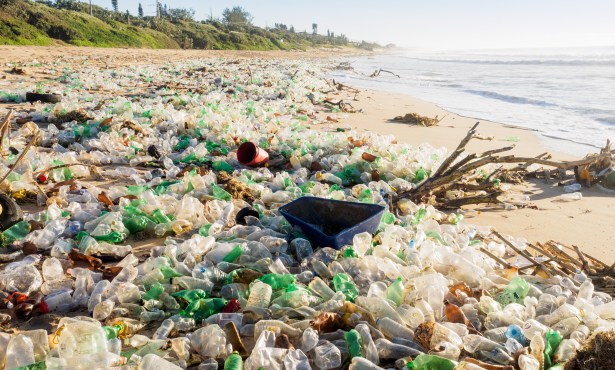Attacking Emissions by Removing Ocean Carbon
Simplification and Scalability Make Taking Carbon Out of Seawater Auspicious

We now realize that addressing climate change requires more than reducing our greenhouse-gas emissions to zero, a challenge that all efforts to date have been woefully inadequate in achieving. For this reason, researchers around the world are looking for effective and economical ways to sequester CO2 from the atmosphere. A number of solutions are showing promise; some are in the trial phase. A research team at UCLA’s Institute for Carbon Management is exploring a totally different approach to atmospheric drawdown.
The UCLA scientists have developed a flow reactor that takes in a continuous flow of seawater and runs it through a mesh charged at a specific electrical frequency to render the water alkaline. This kicks off a chemical reaction that combines the dissolved CO2 with naturally occurring calcium and magnesium abundant in seawater. The outcome is limestone and magnesite. This process is similar to how seashells form. The yielded minerals are durable, safe, and permanent. The seawater that flows out of the back end of the reactor is depleted of dissolved CO2 and thus ready to absorb more carbon from the skies. The only other byproduct is hydrogen, a clean fuel.
There are several key advantages to this approach. First, a given volume of seawater holds about 150 times more carbon than an equivalent volume of air. Second, it is a single-step carbon sequestration and storage (sCS2) process, unlike the multi-step atmospheric sequestering processes being explored. This simplification gives it economic and scalable benefits.
The oceans and the atmosphere work in a constant state of equilibrium. The oceans have countless plant-like organisms called phytoplankton that absorb CO2 through photosynthesis. As humans have pumped more carbon emissions into the atmosphere, the oceans have absorbed more carbon, making them more acidic and contributing to the die-off of coral reefs and threats to some shellfish.
Many approaches to sequestration are needed and soon. The economics of various approaches will be key to which becomes ascendant. Drawing down a large percentage of the 37 billion metric tons of CO2 we produce annually is daunting. The single-step simplification of the UCLA approach, its scalability, its taking inspiration from nature, and the commercialization of the solid mineral and hydrogen by-products offer a major contribution to the race to capture carbon emissions.
Support the Santa Barbara Independent through a long-term or a single contribution.



